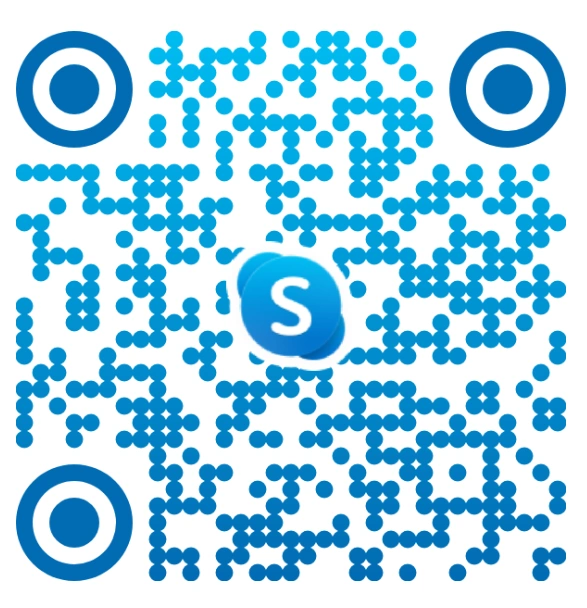Automating Medical Coding: How NLP & AI Reduce Billing Errors by 40%
Introduction
In today’s rapidly evolving healthcare landscape, automated medical coding is a crucial tool for enhancing efficiency and reducing billing errors. Traditionally, medical coding has been a time-consuming process prone to human error, resulting in billing discrepancies and delays in insurance reimbursements. However, advancements in natural language processing (NLP) and artificial intelligence (AI) are transforming the medical coding process by automating much of the work. These innovations improve accuracy and can reduce billing errors by up to 40%. In this blog, we are going to discuss the key technologies behind medical coding automation, their applications, and their impact on the healthcare industry.
Let’s dive in-depth to know the key challenges that occur in medical coding.
Overview of Medical Coding Challenges and Billing Errors
Medical coding involves translating a healthcare provider’s diagnoses, treatments, and services into universally recognized codes. These codes are crucial for the reimbursement process between healthcare providers and insurance companies. However, medical coding faces several challenges:
- Human error: Manual coding is prone to errors, such as incorrect code assignments or misinterpretation of medical terminology, leading to inaccurate billing and delayed reimbursements.
- Complexity of codes: The healthcare industry uses various coding systems, such as ICD (International Classification of Diseases), CPT (Current Procedural Terminology), and HCPCS (Healthcare Common Procedure Coding System), which can lead to confusion and the misapplication of codes.
- Volume of data: As the number of patients and the complexity of medical procedures increase, coders can become overwhelmed, resulting in potential inaccuracies in the coding process.
- Billing delays: Errors in medical coding can lead to delays in claims processing, resulting in reimbursement holdups and administrative inefficiencies.
The Need for Automation in Reducing Human Error in Healthcare Billing
As healthcare data becomes more complex and voluminous, the need for automated medical coding is more critical than ever. AI in medical coding overcomes the limitations of human coders by automating repetitive tasks, minimizing human error, and accelerating the billing cycle.
Automation can solve several pressing challenges, such as:
- Reducing billing errors by up to 40%: AI algorithms can reduce coding errors by automating the extraction and classification of medical data.
- Improve coding accuracy: Medical coding artificial intelligence systems are able to identify the correct code with high precision.
- Increasing efficiency: Automation streamlines workflow, reducing the time spent coding medical records.
By automating the process, healthcare providers can concentrate on patient care, while AI manages the repetitive and error-prone task of coding.
Understanding Medical Coding in Healthcare
Medical coding is a vital process in healthcare that ensures accurate classification and billing of medical services and procedures. It ensures healthcare providers receive proper reimbursement and helps maintain the overall efficiency of the healthcare system. Without it, tracking patient care, submitting claims, and keeping accurate health records would be difficult.
Types of Medical Codes in Billing
Medical coding relies on several code sets, each serving specific purposes in billing and healthcare documentation. The most important are ICD, CPT, and HCPCS. These codes convert complex medical procedures, diagnoses, and services into standardized codes that insurers, healthcare providers, and government agencies can easily interpret.
1. ICD Codes: International Classification of Diseases
ICD (International Classification of Diseases) codes classify and code diagnoses, symptoms, and causes of death. Maintained by the World Health Organization (WHO), these codes are crucial for the classification of diseases and health conditions in healthcare systems worldwide.
ICD codes are updated periodically, with the latest version being ICD-10, used globally. The code set is organized into chapters based on disease or condition types. For example:
- Chapter I: Certain infectious and parasitic diseases
- Chapter II: Neoplasms (cancers)
- Chapter IX: Diseases of the circulatory system
Each ICD-10 code is alphanumeric, ranging from 3 to 7 characters. The first character is a letter, followed by numbers. For example, “I10” represents essential hypertension (high blood pressure).
2. CPT Codes: Current Procedural Terminology
CPT (Current Procedural Terminology) codes describe medical, surgical, and diagnostic services performed by healthcare professionals. Published and maintained by the American Medical Association (AMA), these codes are crucial for insurance billing, directly linking to the services provided during a patient visit.
CPT codes are divided into three categories:
- Category I: Codes for most medical procedures and services (e.g., surgeries, office visits, lab tests).
- Category II: Codes used for tracking performance measures (e.g., preventive care, screening).
- Category III: Temporary codes for emerging technology, services, and procedures.
For example, the CPT code 99213 represents an office visit for an established patient with an intermediate level of complexity.
3. HCPCS Codes: Healthcare Common Procedure Coding System
HCPCS (Healthcare Common Procedure Coding System) is a set of codes used to identify products, supplies, and services not covered by CPT codes. While CPT codes focus on physician services, HCPCS codes cover items like durable medical equipment (DME), non-physician services (e.g., ambulance transport), and medications.
The HCPCS code set is divided into two levels:
- Level I: Identical to CPT codes and used to describe medical services and procedures.
- Level II: Used for products, supplies, and services not included in Level I, such as oxygen therapy and prosthetics.
An example of an HCPCS Level II code is E0114 for a walker with wheels, which is not covered under the CPT system.
| Code Type | Purpose | Example |
| ICD | Diagnosis | E11.9 (Type 2 Diabetes, without complications) |
| CPT | Procedures | 99213 (Office or other outpatient visit) |
| HCPCS | Medical Equipment | E1399 (Durable medical equipment, unspecified) |
Traditional Medical Coding Process and Common Pitfalls
The traditional medical coding process requires a coder to review patient records, interpret physician notes, and manually assign the correct code. This method is time-consuming and prone to human errors, such as:
- Misinterpretation of handwritten notes
- Incorrect or missing codes
- Lack of standardized procedures across different systems
- Delays in the claims submission process
As a result, medical coding automation has emerged to tackle these challenges and streamline the process, improving efficiency and reducing errors.
Technologies Behind Medical Coding Automation
The advent of AI medical coding has transformed the medical billing process. Below, we explain the key technologies that power automated medical coding:
1. Natural Language Processing (NLP): Enabling Machines to Understand Medical Text
NLP algorithms allow computers to understand human language, making them essential for healthcare applications. In medical coding, NLP processes unstructured text, like physician notes, and converts it into structured data for accurate coding.
Key NLP Models for Healthcare include:
- Named entity recognition (NER): It helps identify relevant entities such as diseases, treatments, and drugs from medical texts.
- Part-of-speech tagging: NLP uses this technique to determine the grammatical structure of sentences, which is important for understanding medical context.
- Dependency parsing: It allows machines to understand relationships between different parts of text, helping them better understand complex medical information.
2. AI and Machine Learning (ML): Automating the Extraction and Categorization of Data
AI and machine learning models are essential for extracting medical information and assigning the correct codes. By learning from historical records, these models improve accuracy over time, automating code assignment in hospitals and reducing manual labor and errors.
3. Deep Learning: Role of Neural Networks in Advanced Code Prediction
Deep learning, particularly neural networks, is crucial in automating medical coding. These models analyze large datasets to predict accurate medical codes by identifying patterns and associations, leading to more precise coding suggestions.
NLP in Medical Coding
NLP is a key technology that powers medical coding automation. With its ability to process and interpret complex medical text, NLP models for healthcare are improving the accuracy and efficiency of medical coding. Here are some of the tools that are revolutionizing the medical coding landscape:
Tools for NLP in Healthcare:
| Tool | Description |
| SpaCy | An open-source NLP library used for preprocessing and analyzing medical texts. |
| NLTK | Another widely-used NLP toolkit that helps with tokenization and other text processing tasks. |
| MetaMap | A tool developed by the National Library of Medicine that maps biomedical text to the Unified Medical Language System (UMLS). |
| Google Cloud Healthcare NLP API | A tool that leverages Google’s AI to process and analyze healthcare texts, extracting valuable insights from medical records. |
These tools allow healthcare providers to process vast amounts of medical data swiftly and accurately, greatly enhancing coding precision.
AI-Powered Medical Coding Systems
AI-driven medical coding systems enhance accuracy and efficiency by utilizing advanced AI architectures. Through supervised and unsupervised learning, these systems continuously improve their models.
1. Supervised vs. Unsupervised Learning Approaches
- Supervised learning: Artificial intelligence models are trained on labeled datasets to predict the correct medical codes based on known examples.
- Unsupervised learning: AI identifies patterns and clusters in unlabeled data to suggest potential medical codes, allowing it to learn without predefined labels.
2. BERT (Bidirectional Encoder Representations from Transformers) and GPT for Medical Text Understanding
BERT and GPT are revolutionizing healthcare with their advanced natural language processing capabilities. These transformer models can comprehend the nuances of medical language, allowing for more accurate medical coding. By grasping the context and relationships between terms, they ensure improved precision in assigning medical codes, marking a significant leap forward in the field of healthcare automation.
3. IBM Watson Health: AI for Predicting Accurate Codes from Medical Records
IBM Watson Health uses AI and machine learning to predict the most accurate codes from medical records. By analyzing physician notes and historical data through NLP, it suggests highly accurate codes, reducing errors and making the coding process more efficient.
AI and NLP Tools for Reducing Billing Errors
Several AI and NLP tools have been developed to simplify medical coding, minimize billing errors, and enhance overall accuracy:
- Optum360: It automates the entire revenue cycle with AI and NLP, ensuring precise medical coding and reducing errors that cause claim rejections and reimbursement delays.
- 3M CodeFinder: It uses AI-powered algorithms and data analytics to assist coders in identifying the correct codes, enhancing coding accuracy, and preventing undercoding or overcoding that may lead to billing issues.
- TruCode: It boosts coding accuracy by utilizing natural language understanding (NLU), enabling coders to automatically extract and assign the correct codes from unstructured medical texts and clinical documents.
- Cerner PowerChart: Incorporates AI and NLP to provide real-time suggestions and corrections during coding, reducing errors and helping coders comply with industry regulations.
- TrueCode Encoder: Combines AI with NLP to automate code assignments and guide coders in choosing the correct code based on patient records, thereby reducing reliance on manual input and reducing human errors.
- Nuance Dragon Medical One: Uses AI and speech recognition technology to accurately transcribe medical records, enabling faster and more accurate coding by automating the dictation process and improving clinical documentation.
- Clarity Coding: Leverages AI and machine learning to analyze medical records and recommend accurate coding, thereby reducing time spent on manual coding tasks and ensuring consistency and accuracy in billing.
| Tool | Key Features |
| Optum360 | Automates the revenue cycle using AI and NLP. |
| 3M CodeFinder | AI-driven algorithms for code identification. |
| TruCode | Utilizes natural language understanding (NLU). |
| Cerner PowerChart | Real-time suggestions and corrections using AI and NLP. |
| TruCode Encoder | Combines AI and NLP for code assignment. |
| Nuance Dragon Medical One | AI and speech recognition technology for medical transcription. |
| Clarity Coding | Uses AI and machine learning for medical record analysis and code recommendation. |
These AI and NLP-powered tools ensure that medical coding automation aligns with industry standards, improving the accuracy and efficiency of healthcare billing systems.
Integrating NLP & AI into Medical Billing Systems: A Step-by-Step Guide
Integrating natural language processing (NLP) and artificial intelligence (AI) into medical billing systems can greatly enhance efficiency, accuracy, and productivity within the healthcare sector. These technologies automate the extraction and classification of information from medical records, reducing human error and accelerating the billing process. Here’s a step-by-step guide to integrating NLP and AI into medical billing systems to streamline operations and minimize errors.
1. Define the Objectives of Integration
Before starting the integration process, it’s essential to define the objectives and goals for incorporating NLP and AI into the medical billing system. This involves understanding the current system’s pain points and challenges, such as:
- High error rates in billing codes
- Slow processing times due to manual input
- Increase in claim denials and rejections
- Issues with compliance and regulatory requirements
By setting clear goals, you can ensure that the integration of AI medical coding and NLP in healthcare directly addresses specific challenges and improves the workflow.
2. Select the Right AI and NLP Tools
The next step is to choose the right AI models and NLP tools that can automate and enhance the medical billing process. Some commonly used tools include:
- SpaCy and NLTK: These popular libraries are used for processing text and extracting key information from unstructured text, which is valuable for analyzing medical records.
- MetaMap: This tool helps map biomedical text to the Unified Medical Language System (UMLS), which is essential for accurate medical terminology and coding.
- Google Cloud Healthcare NLP API: A powerful tool that uses AI to extract healthcare-related information from unstructured text, making it easier to understand and categorize.
- IBM Watson Health: Known for its AI capabilities, this tool can accurately predict medical codes from patient records.
Once the tools are selected, ensure they are compatible with your existing EHR (Electronic Health Record) and EMR (Electronic Medical Record) systems for smooth integration.
3. Integrate AI and NLP with EHR and EMR Systems
Medical billing revolves around EHR and EMR systems, where patient records are kept. To automate the process efficiently, integrating AI-powered medical coding tools with these systems is essential. Here’s how you can do that:
- API integration: Use application programming interfaces (APIs) to connect AI-powered medical coding software to existing EHR/EMR systems such as Epic Systems, Cerner, or Allscripts. This allows seamless data transfer and integration between medical records and billing systems.
- FHIR (Fast Healthcare Interoperability Resources): Use FHIR standards to facilitate smooth data exchange across platforms. FHIR ensures that data exchange between AI tools and your healthcare systems happens in a structured and secure manner.
4. Implement Natural Language Processing for Text Extraction
One of the key strengths of NLP in medical billing automation is its ability to understand and extract important information from free-text documents like patient records and clinical notes. Here’s how NLP can be applied in healthcare for medical billing:
- Named entity recognition (NER): NLP algorithms, like Named Entity Recognition (NER), identify important medical information in patient records, such as diagnoses, medications, and treatments. This helps the system automatically extract the necessary details for coding.
- Part-of-speech tagging: This technique helps analyze the structure of sentences in clinical notes, allowing AI to understand the relationships between medical terms and identify the correct codes for procedures and diagnoses.
- Dependency parsing: It helps understand how words in a sentence relate to one another, allowing for more accurate classification of medical data.
Once NLP processes this data, it can automatically suggest or assign the appropriate ICD, CPT, or HCPCS codes for accurate billing.
5. Train the AI Models
Once the NLP tools are ready, the next step is to train the AI models for medical coding. This involves providing AI algorithms with historical data to help them identify patterns and make accurate predictions.
- Supervised learning: This method uses labeled data to train AI models. By using a dataset of coded medical records, AI systems can learn to predict medical codes based on the clinical notes.
- Unsupervised learning: This technique helps find hidden patterns in data without needing labeled inputs. It allows AI to discover new insights from unstructured data.
- Continuous improvement: AI models need regular training and updates as new medical terms and billing codes are introduced. This keeps the AI accurate and reliable for medical coding.
6. Validate and Test the AI Models
Before the full-scale rollout of an AI system, it is important to validate the model predictions and ensure that the system works as expected. This step includes:
- Test accuracy: Ensure the AI accurately identifies the correct medical codes across a wide range of clinical scenarios, including complex and diverse cases.
- Human inspection: Initially, human coders should review a sample of AI-generated codes to ensure accuracy. This inspection will help identify any issues or gaps in the model’s predictions.
- Evaluate key metrics: Measure the AI model’s performance using precision, recall, and F1-score to determine how well the system is classifying data and minimizing errors.
7. Automate Medical Billing Workflows
Once the AI and NLP models are fully integrated and validated, the next step is to automate the entire medical billing process. This includes:
- Claim generation: Automatically generate claims for insurance billing using AI-predicted medical codes.
- Validation and submission: The system can also automatically verify if the codes are valid for the services provided and submit them to insurance companies or third-party payers.
- Real-time updates: AI can constantly monitor the billing process and provide real-time feedback and updates on the status of the claim, reducing the need for manual intervention.
By automating workflows, healthcare providers can significantly reduce the time spent on billing, improve efficiency, and cut down on administrative costs.
8. Ensure Compliance and Security
Since medical records contain sensitive information, it’s essential to ensure that all data processed by AI and NLP models comply with healthcare regulations like HIPAA (Health Insurance Portability and Accountability Act).
- Data privacy: Utilize encryption and secure data transmission protocols to protect patient data throughout the entire process.
- Compliance checks: Implement automated compliance checks to ensure that AI models adhere to HIPAA regulations and other relevant standards.
9. Monitor Performance and Improve Systems
Once NLP and AI-powered medical coding systems are fully integrated and operational, continuous monitoring is crucial to ensure optimal performance. Regular audits, user feedback, and performance analysis will help identify areas for improvement.
- Track billing accuracy: Monitor reductions in coding errors and claim denials.
- User feedback: Collect input from medical coders and billing professionals to ensure the AI system enhances efficiency and accuracy.
- System updates: Continuously update the AI model to keep pace with new medical codes, terminology, and regulations.
10. Scale the System Across Multiple Healthcare Entities
Once the system proves successful in one healthcare facility, it can be scaled across multiple locations or healthcare entities. With cloud computing and secure data transfer protocols, AI in medical coding can be expanded across different organizations, enhancing the overall healthcare billing ecosystem.
Performance Evaluation of AI-Driven Medical Coding
In AI-powered medical coding, accuracy is crucial, as incorrect classification of medical codes can cause billing errors, insurance claim denials, and compliance issues. The performance of AI models in medical coding can be assessed using several key metrics:
- Accuracy: Ensures the system assigns the correct code each time.
- Precision and Recall: Measures how accurately the system identifies relevant codes and how well it captures all necessary codes.
- F1-Score: A balanced metric that combines both precision and recall to assess the overall performance of the system.
Reducing Billing Errors by 40%: Case Studies with Before/After Comparisons
One of the biggest advantages of AI in medical coding is its ability to minimize human errors in billing and claims processing. Automated medical coding helps healthcare organizations save time, cut costs, and improve billing accuracy. Below are case studies that demonstrate how AI reduces billing errors by up to 40%.
Case Study 1: Healthcare Provider X
- Before AI implementation: Healthcare provider X was manually processing 10,000 medical claims each month. Due to human error, about 5% of claims had incorrect codes, leading to delayed payments and rejected claims. This caused frustration among employees and slowed cash flow.
- After AI implementation: The provider implemented AI-powered medical coding software that automatically classified and assigned medical codes from clinical notes using NLP models. As a result, the error rate dropped to 1.5%, cutting billing errors by approximately 40%.
- Results: The AI system significantly improved billing accuracy, resulting in faster reimbursements, fewer rejected claims, and enhanced overall revenue cycle management.
Case Study 2: Hospital Group Y
- Before AI implementation: A large hospital group was dealing with frequent billing errors from incorrect medical coding. This resulted in more claim rejections and revenue loss, as manual coding was slow and error-prone.
- After AI implementation: The hospital group implemented AI medical coding solutions using deep learning models and NLP in healthcare. The system was trained to identify patterns and minimize coding errors.
- Results: Within six months, the hospital group experienced a 40% reduction in billing errors and a significant drop in claim rejection rates. The AI-powered medical coding system boosted operational efficiency, enabling healthcare staff to focus more on patient care and less on administrative tasks.
These case studies highlight how AI-powered medical coding can significantly reduce errors, streamline workflows, and ensure more accurate billing practices.
Measuring Return on Investment (ROI) with AI in Medical Coding
Investing in AI-powered medical coding solutions requires an ROI analysis to assess if the costs of implementation, training, and maintenance are justified by the benefits. Here are key factors to consider when measuring ROI with AI in medical coding:
1. Reduced Billing Errors and Claim Denials
The main benefit of integrating NLP and AI in medical coding is the reduction of billing errors and claim rejections. Fewer errors lead to fewer rejections, faster reimbursements, and improved revenue cycle efficiency, resulting in better cash flow for healthcare providers.
- ROI impact: Hospitals and clinics can expect a significant reduction in administrative costs related to claim resubmissions and handling rejected claims.
2. Increased Productivity and Time Savings
Automating medical coding with AI and NLP significantly cuts down the time spent on manual tasks. Healthcare providers can handle more claims in less time, allowing coders to focus on more complex cases and reducing the need for extra coding staff.
- ROI impact: Increased productivity and time savings lead directly to cost savings in labor and administrative expenses.
3. Enhanced Compliance and Accuracy
AI systems help ensure compliance with HIPAA and other healthcare regulations by automating the coding process and reducing errors. They also continuously update their knowledge of coding guidelines, ensuring healthcare providers stay current with evolving industry standards.
- ROI impact: This can help avoid costly penalties or fines for noncompliance, which further contributes to overall ROI.
4. Reduced Operational Costs
By automating the medical coding automation process, healthcare providers can reduce their reliance on manual labor and improve the operational efficiency of their revenue cycle management.
- ROI impact: Long-term savings in operational costs can balance out the initial investment in AI-powered medical coding tools.
5. Improved Patient Satisfaction
AI in medical coding speeds up claims and reimbursements, letting healthcare providers focus more on patient care. Faster reimbursements improve financial stability, allowing reinvestment in better patient services.
- ROI impact: It also boosts reputation and patient satisfaction, leading to better patient retention and growth.
Challenges in AI & NLP-Based Medical Coding Automation
Despite the benefits, AI and medical coding automation face challenges, including:
- Data privacy and compliance: AI systems must follow HIPAA rules to protect patient data.
- Bias in machine learning models: AI models need diverse datasets to avoid biased coding decisions.
Ambiguities in medical text: NLP models must understand complex medical language, including ambiguities and nuances.
Emerging Trends and Future of Medical Coding Automation
As AI-powered medical coding systems advance, new techniques are emerging to enhance automated coding software. These improvements aim to boost accuracy, security, and efficiency while tackling issues like data privacy and system integration. Let’s look at some exciting trends in this field, such as federated learning and blockchain.
1. Federated Learning: Privacy-Preserving AI Training
Federated learning trains AI models in decentralized systems without sharing patient data. It keeps data local and only shares model updates, improving AI in medical coding by:
- Ensuring privacy: Data stays on-site, lowering security risks.
- Improving accuracy: Models learn from diverse healthcare data.
- Reducing costs: No data transfers are needed, cutting storage costs.
This method follows healthcare privacy rules like HIPAA, boosting coding accuracy while keeping data secure.
2. Blockchain: Ensuring Data Integrity in Medical Billing
Blockchain creates a secure record of medical codes and billing data, preventing errors and fraud. Key benefits include:
- Data integrity: Codes are recorded permanently, minimizing errors.
- Transparency: All parties can view unchangeable coding records.
- Automated billing: Smart contracts enable quicker, automated payments.
By combining blockchain with medical coding automation, we get more reliable and secure coding, enhancing the billing process.
AI Innovations: How Transformer Models Like GPT-4 are Reshaping Medical Coding
GPT-4, an advanced transformer model, is changing AI medical coding by using powerful NLP techniques to analyze medical records and predict accurate codes. This improves efficiency and reduces errors, helping healthcare providers simplify their billing systems. By processing large amounts of text, GPT-4 understands context and quickly assigns the right codes, making automated medical coding more reliable and cost-effective.
Key Points:
- Contextual understanding: GPT-4 accurately predicts codes by understanding medical text.
- Faster processing: It speeds up medical coding by automating code assignment.
- Fewer errors: It lowers billing mistakes and inaccuracies in code classification.
- Increased efficiency: It streamlines the billing cycle, reducing the need for manual work.
- Cost savings: It cuts operational costs by automating the coding process.
- Future potential: As GPT-4 advances, its accuracy and efficiency in medical coding will keep improving, helping healthcare providers.
Key Considerations for Healthcare Providers in Adopting AI and NLP Technologies
Adopting AI-powered medical coding solutions requires considering important factors like data privacy and making sure to follow regulations like HIPAA to protect patient information. System integration is also key, as AI tools must work well with existing EHR and EMR systems for smooth operation. Regular maintenance is also needed to keep AI models current, ensuring they remain accurate and effective in medical coding. By focusing on these factors, healthcare providers can fully benefit from medical coding automation, boost efficiency, and get ready for success in a technology-driven healthcare world.
Why Choose Amplework for Revolutionizing Medical Coding Automation with AI and NLP?
Amplework is a leading AI development agency that uses AI and NLP to significantly reduce billing errors and make the medical billing process more efficient. With our expertise in advanced artificial intelligence and natural language processing (NLP), we provide top-notch solutions that meet the needs of healthcare providers. Here’s why Amplework is the best partner for transforming your medical coding process:
- Advanced AI Solutions: We use AI models that automatically understand medical records, ensuring all codes are correct and up-to-date, lowering the chances of claims being rejected.
- Efficient Billing with NLP: Our NLP tools can interpret medical language, reducing human errors from misreading and making sure every detail is captured accurately for billing.
- Seamless Integration: We make sure our AI-based medical coding systems work smoothly with your current EHR and EMR systems, creating an efficient workflow that boosts productivity.
- Proven Success: Our solutions have reduced billing errors by up to 40%, and healthcare organizations trust us to improve coding accuracy and lower operational costs.
- Customization and Support: We know every healthcare provider has different needs. At Amplework, we offer customized solutions and continuous support to help you make the most of automated medical coding.
Final Words
Integrating AI in medical coding is changing the healthcare industry by cutting errors, boosting efficiency, and ensuring accurate billing. Using NLP and advanced AI, healthcare providers can automate coding, lower billing errors by up to 40%, and enhance the efficiency of the revenue cycle. As these technologies keep advancing, more innovations in medical coding automation are expected.
Frequently Asked Questions
How do AI and NLP improve medical coding accuracy?
AI and NLP streamline medical coding by automating error detection, analyzing medical records, and ensuring accurate coding, which significantly reduces human mistakes.
What is the impact of reducing billing errors in medical coding?
Reducing billing errors by 40% leads to fewer claim rejections, faster reimbursement cycles, improved revenue, and enhanced overall healthcare operational efficiency.
How can healthcare providers implement AI and NLP for medical coding?
Healthcare providers can integrate AI and NLP solutions into their existing coding systems, partnering with experts to ensure seamless adoption and training of the technology.


 sales@amplework.com
sales@amplework.com
 (+91) 9636-962-228
(+91) 9636-962-228





